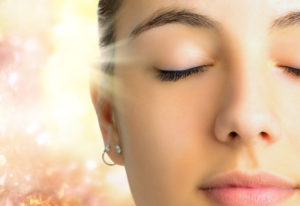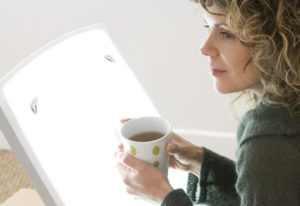With shorter days and lower temperatures, people often get significantly less sunlight during the winter months. Greater artificial light exposure is also typical of the season. These light changes can have a real impact on mood in many people. Some experience a mild sort of winter blues. In others, however, the light changes can lead to seasonal affective disorder (SAD). For those contending with winter mood issues, the benefits of light therapy can be plentiful.
The Light and Mood Connection
 Light has a powerful impact on mood. Too little sunlight and too much artificial light exposure, particularly during the two hours before sleeping, can disrupt the circadian rhythm. This, in turn, can disrupt the production of melatonin and interfere with the sleep cycle, all of which impact mood. Disruption of the sleep cycle can also impact cognitive performance.
Light has a powerful impact on mood. Too little sunlight and too much artificial light exposure, particularly during the two hours before sleeping, can disrupt the circadian rhythm. This, in turn, can disrupt the production of melatonin and interfere with the sleep cycle, all of which impact mood. Disruption of the sleep cycle can also impact cognitive performance.
Bright natural light, such as early morning sunshine, is important to the serotonin release process. Low serotonin levels have long been associated with SAD and other depressive disorders. Sunlight exposure also aids in the production and utilization of vitamin D. Low levels of vitamin D have been shown to impact mood and are associated with a higher risk of depression.
Using the Benefits of Light Therapy to Improve Mood
We live a very different sort of lifestyle than that of our agrarian ancestors. With our increasingly urban lifestyles and busy work schedules, getting enough natural sunlight can be difficult at any time of year. This can be especially true during the winter months, when low temperatures and shorter daylight hours may discourage outdoor activities.
Many people leave for work or school when it is still dark in the morning and by the time they get home, it’s almost dark again. Shift workers can find it especially difficult to get enough sunlight. Shorter days, longer nights and evening or overnight shift work can dramatically increase the number of hours per day a person is exposed to artificial light.
Such life patterns set the stage for light-related mood problems. However, light therapy can offer a solution. Simple and noninvasive, light therapy is a science-backed option for helping to improve mood during the winter months. There is some evidence that bright light can be as helpful as antidepressants for those suffering from SAD and also for those dealing with the standard sort of depression. Light therapy for mood disorders like SAD uses a light box featuring a type of light that mimics the sun.
How Does Light Therapy Work?
The artificial lights typically in use in a home or workplace are very different from the light used in a light therapy light box, which utilizes a bright, full-spectrum light, akin to that of the sun. This offers the major benefit of stimulating the brain in the same ways that natural light does.
This action translates into a variety of other mood-enhancing benefits. Using this type of light therapy can help to reset the circadian rhythm, encourage the production of sleep and mood enhancing substances, like the hormone melatonin, as well as encourage the release of serotonin at the right levels to improve mood.

Some people can experience minor side effects from using a light box. These side effects can include nausea, headache, feeling irritable and eyestrain. However, these side effects are fairly uncommon and, if they do occur, they tend to be brief and mild in nature. People with bi-polar disorder should discuss the use of a light box with their primary health care provider. And, really, for anybody beginning something new related to their health, it’s always advisable to talk about it with your health care provider.
Incorporate Light Therapy Into a Prevention Plan
With the many benefits of light therapy for mood, for people who tend toward winter blues or more intense mood issues during winter, it may make sense to use light therapy as a preventative. Combine that with a healthy diet, quality nutritional supplements, good sleep hygiene and daily physical activity to increase the likelihood of reducing the severity of or even avoiding mood problems altogether during the winter months.







